9 hidden iPhone features you never knew existed
Posted on
by
Kirk McElhearn and Joshua Long
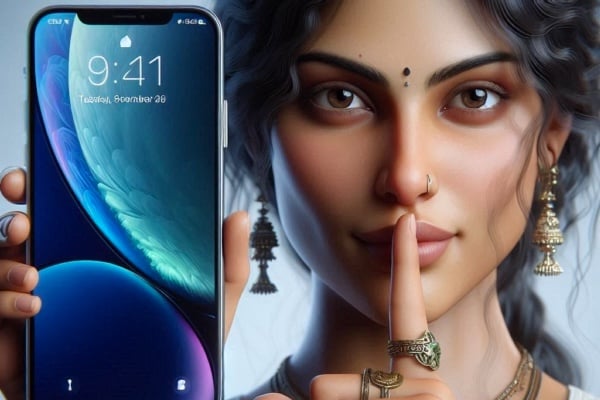
Your iPhone runs an amazingly powerful operating system. It can do so many things, from shooting 4K videos to processing complicated graphics. You can write, calculate, design, and play demanding games. And iOS, the iPhone’s operating system, has so many features that it would take an entire book to explain them all.
Amidst all this power are dozens of cool features—many of which you almost certainly don’t know about. These features can make your life simpler, save time, and help you better control your iPhone. Here are 9 cool features that will improve how you use your iPhone.
1. Back tap: The “hidden button” on the back of your iPhone
You can tell your iPhone to quickly enable certain features by tapping the back of the device. Go to Settings > Accessibility > Touch > Back Tap, and you’ll see options for double tap and triple tap.
You can set these shortcuts to bring up the camera, turn on the flashlight, lock the screen, call up Siri, and much more. You can also use these settings to enable accessibility features and to run shortcuts you’ve created with the Shortcuts app.
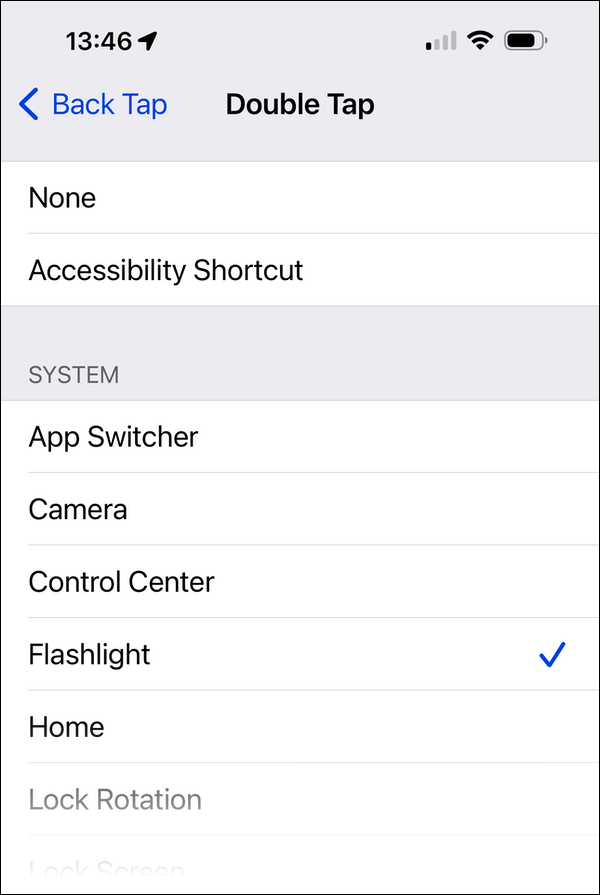
One problem is that you can easily double-tap your phone accidentally, sometimes just by taking it out of your pocket. So if this happens, try setting the feature you want to use as a triple tap. Note that not all of the options will work when the iPhone is locked.
2. Flash for notifications
Another useful accessibility feature is to turn on Settings > Accessibility > Audio Visual > LED Flash for Alerts. If you do this, you’ll see a flash whenever you get a notification so you can keep your iPhone in silent mode but still see when notifications arrive. Even if your iPhone is screen-side up, you’ll still see a flash if you’re near the phone, but if it’s face down, the flash will be very bright.
3. Text replacements (i.e. “custom auto-complete”)
One of the best secret iPhone settings is called Text Replacement; you can think of it as your own personal autocomplete—or autocorrect-correction—feature.
In Settings > General > Keyboard > Text Replacement, you can set up bits of text that your iPhone replaces when you type them. For example, I like to set @@ to expand to my email address, and myad to expand to my home address. This can save you time when you’re filling in forms or answering emails.
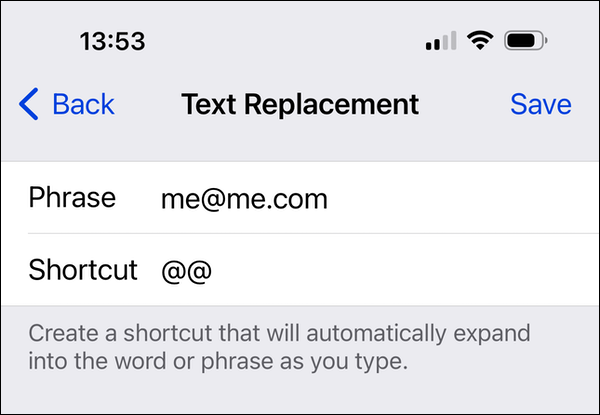
You can include much larger text replacements, such as a boilerplate email or other texts that you may want to use often. Just copy the text from another document and paste it into the Phrase field.
If you find that the built-in autocorrect often makes errors in “correcting” things you type, you can also use Text Replacement to fix that as well. Just add the word that often causes you challenges into both the Phrase and Shortcut fields.
A related trick is that you can use this to “type” characters that aren’t on the built-in keyboard. For example, you can set up applelogo to “type” the Apple logo character (), again by using the copy-paste trick above. (Just be aware that the Apple logo is a rare exception that isn’t part of the Unicode standard, so it’s only visible on Apple devices. If you send that character to someone using Android, Windows, or other operating systems, they will just see a generic rectangle instead.)
You can also use it to quickly insert an emoji, rather than hunting for it on the emoji keyboard. For example, if you’re a Star Trek fan, you can set up llap to “type” Spock’s Vulcan salute (“live long and prosper”) hand gesture emoji: 🖖.
4. Advanced auto-complete tricks
Your iPhone can auto-complete some information based on what’s in your Contacts card. If you type, in either a text message or email, “my address is…” you’ll see your full address in the auto-complete bar above the keyboard. The same will happen if you type “my phone number is…,” “my email is…,” or even “[contact name]’s address/phone number/email is…”
Here’s a related trick that doesn’t have to do with your contacts. In the Messages app, if your recipient is using iMessage, you can type “I’m at…” and you’ll get an autocomplete option for “Current Location.” This makes it easy to share your precise location with someone you know, even if you’re not at home.
5. Use the keyboard as a trackpad
Editing text on an iPhone is difficult. Moving the cursor around by dragging your finger is very imprecise. If, when typing, you press and hold the space bar, you can use the keyboard like a trackpad and move the cursor around in text. This is much more efficient than using your finger; you can move the cursor easily to a precise location.
6. Access settings from Control Center
Control Center, which you access by swiping down from the top right of the screen, offers a number of widgets that let you enable, disable, and adjust certain functions. You can turn on or off Wi-Fi, Bluetooth, or airplane mode; you can adjust volume and brightness; and much more.
For many Control Center widgets, pressing and holding them gives you more options. This will increase the size of the volume and brightness sliders, allowing you to adjust them more precisely. Pressing and holding the Focus widget will display all of your Focus modes. And if you use the Home app to manage your smart home, pressing and holding the Home widget gives you access to all your scenes and settings.
7. Contextual menus on app icons
Perhaps you know that you can arrange icons on your Home Screen by holding down your finger on a blank area until the icons wiggle. But you may not know that you can use this gesture for other purposes, too.
You can also press and hold app icons to display contextual menus—similar to what you get on a Mac if you right-click, Control-click, or two-finger click a trackpad. Some apps give you very useful options. Tap and hold the Settings app to get quick access to several key settings. Tap and hold the Mail app to get one-tap access to some of your mailboxes. Tap and hold the App Store app to quickly view updates, purchased items, or redeem a gift card code. Tap and hold the Camera app icon to take a selfie, video, portrait, or portrait selfie.

Many apps from Apple and from third parties offer these contextual menus, so try your favorites and see what you can do quickly.
8. Use the Measure app as a level
Are you hanging a picture or installing a shelf and want to get it perfectly level? Your iPhone can help. Open the Measure app, tap Level, and then place the iPhone in position. The iPhone’s camera bump will skew it if it’s on its back, but the side buttons don’t seem to affect the level. So place the iPhone on its side, or in a way that the camera bump won’t get in the way, such as on another flat object that isn’t as large as the iPhone. (In the example below, I put my iPhone on my AirPods case.)
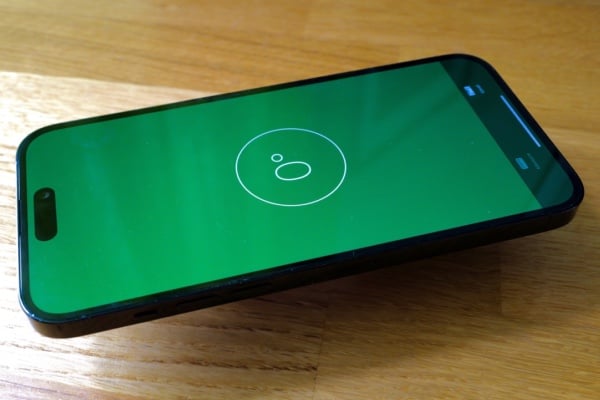
9. Hide Home Screen pages
You might want to hide one or more of your home screens, especially if you frequently hand your iPhone to someone such as a child. If you touch and hold an empty part of your iPhone’s screen, then tap the horizontal dots at the bottom, and you’ll see thumbnails of all your home screens. Each one has a checkmark under it; if you want to hide one of these from prying eyes, uncheck it, then tap Done. If you ever want to bring back a hidden home screen, follow the same steps and check the pages that you want to display.
Note that you can still access apps on a hidden homepage from the App Library, or when doing a Spotlight search (swipe down on the screen and type to search).
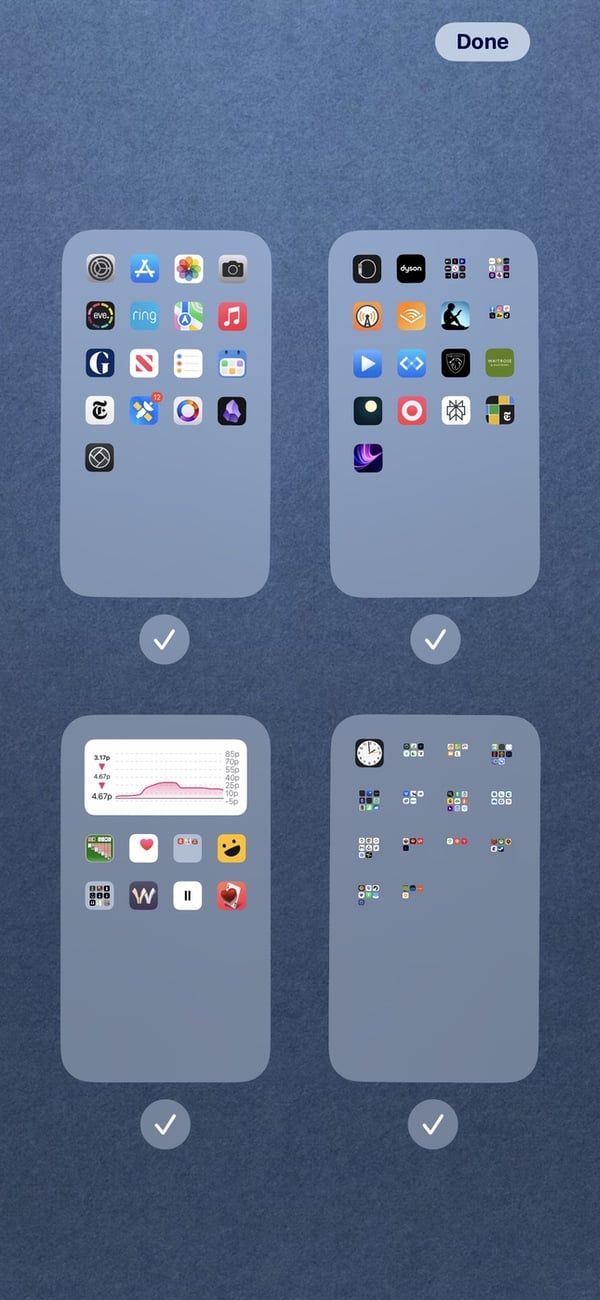
Your iPhone can, of course, do much more than that! For lots more additional iPhone tips and tricks, read about 38 things you didn’t know Siri can do.
How can I learn more?
 Each week on the Intego Mac Podcast, Intego’s Mac security experts discuss the latest Apple news, including security and privacy stories, and offer practical advice on getting the most out of your Apple devices. Be sure to follow the podcast to make sure you don’t miss any episodes.
Each week on the Intego Mac Podcast, Intego’s Mac security experts discuss the latest Apple news, including security and privacy stories, and offer practical advice on getting the most out of your Apple devices. Be sure to follow the podcast to make sure you don’t miss any episodes.
You can also subscribe to our e-mail newsletter and keep an eye here on The Mac Security Blog for the latest Apple security and privacy news. And don’t forget to follow Intego on your favorite social media channels: ![]()
![]()
![]()
![]()
![]()
![]()
![]()